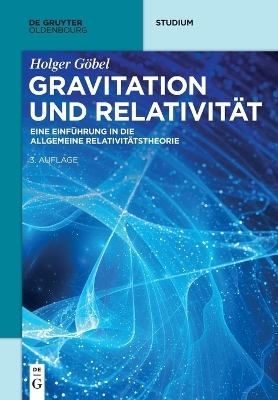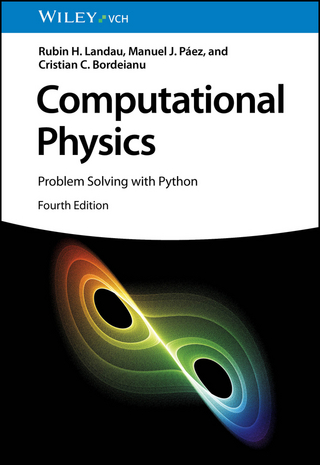
High Pressure Shock Compression of Solids
Springer-Verlag New York Inc.
978-0-387-94402-9 (ISBN)
- Titel ist leider vergriffen;
keine Neuauflage - Artikel merken
This volume concerns the fracture and fragmentation of solid materials that occurs when they are subjected to extremes of stress applied at the highest possible rates. The plan for the volume is to address experimental, theoretical, and com- putational aspects of high-rate dynamic fracture and fragmentation, with emphasis on recent work. We begin with several chapters in which the emphasis falls on experimental methods and observations. These chapters address both macroscopic responses and the microscopic cause of these re- sponses. This is followed by several chapters emphasizing modeling-the physical explanation and mathematical representation of the observations. Some of the models are deterministic, while others focus on the stochastic aspects of the observations. Often, the ov/!rall objective of investigation of dynamic fracture and fragmentation phenomena is provision of a means for predicting the entire course of an event that begins with a stimulus such as an impact and proceeds through a complicated deformation and fracture pro- cess that results in disintegration of the body and formation of a rapidly expanding cloud of debris fragments.
Analysis of this event usually involves development of a continuum theory and computer code that captures the experimental observations by incorporating models of the important pheno- mena into a comprehensive description of the deformation and fracture pro- cess. It is to this task that the work of the last few chapters is devoted.
1 Spallation in Solids Under Shock-Wave Loading: Analysis of Dynamic Flow, Methodology of Measurements, and Constitutive Factors.- 1.1. Introduction.- 1.2. Background: Wave Interactions at Spalling and the Methodology of Spall Strength Measurement.- 1.3. Acoustic Analysis of Flow During Continuous Spall Fracture.- 1.4. Spallation in Materials of Different Classes.- 1.5. Fracture Work and Edge Effects.- 1.6. Conclusion.- 1.7. References.- 2 Microstructural Aspects of Dynamic Failure.- 2.1. Introduction.- 2.2. Dynamic Fracture.- 2.3. Shear Band Instability.- 2.4. Stress Wave Effects in Rocks and Ceramics.- 2.5. Summary and Conclusions.- 2.6. Acknowledgments.- 2.7. References.- 3 Dynamic Fracture in Metals at High Strain Rate.- 3.1. Introduction.- 3.2. Loading Techniques.- 3.3. Experiments.- 3.4. Stress Wave Model for Spall.- 3.5. SSS Calculations Incorporating the NAG Model.- 3.6. Acknowledgment.- 3.7. References.- 4 Laser-Induced Spallation and Dynamic Fracture at Ultra High Strain Rate.- 4.1. Introduction.- 4.2. Laser-Induced Shock Wave Pressure.- 4.3. Numerical Simulation of Laser-Induced Spall.- 4.4. Experimental Method.- 4.5. Spall and Dynamic Fracture of Metals.- 4.6. Experimental Estimation of the Shock Wave Pressure Decay and Spall Strength in Different Materials.- 4.7. Spall Behavior of Composite Materials.- 4.8. Fracture Modes of Alumina at Hypervelocity Impact Conditions.- 4.9. Brittle to Ductile Transition in 6061-T6 Aluminum Alloy at Ultra High Strain Rate.- 4.10. Impact Resistance of Adhesive Joints.- 4.11. Laser Simulation of Hypervelocity Impacts in Space.- 4.12. Summary.- 4.13. References.- 5 Explosive Fragmentation.- 5.1. Introduction.- 5.2. Code Results.- 5.3. Experimental Results.- 5.4. State of Stress.- 5.5. Fragmentation Steps.- 5.6. Comparison to 3D Situations.- 5.7. Conclusions.- 5.8. Acknowledgments.- 5.9. References.- 6 Radiographic Studies of Impact Fragmentation.- 6.1. Introduction.- 6.2. Experimental Techniques.- 6.3. Analysis of Film.- 6.4. Results.- 6.5. Discussion.- 6.6. Summary.- 6.7. Acknowledgments.- 6.8. References.- 7 Pulsed Holography Diagnostics of Impact Fragmentation.- 7.1. Introduction.- 7.2. Measurement Objectives.- 7.3. Pulsed Laser Holograms.- 7.4. Test Configuration.- 7.5. Holographic Image Reconstruction Systems.- 7.6. Holographic Image Resolution Limits.- 7.7. Future Efforts.- 7.8. Acknowledgments.- 7.9. References.- 8 Initiation and Propagation of Damage Caused by Impact on Brittle Materials.- 8.1. Introduction.- 8.2. Phenomenology.- 8.3. Damage Models.- 8.4. Failure Propagation Speed.- 8.5. References.- 9 Spall and Fragmentation in High-Temperature Metals.- 9.1. Introduction.- 9.2. High-Temperature Solids.- 9.3. Fragmentation of Liquid Metals.- 9.4. Liquid-Vapor State Fragmentation.- 9.5. References.- 10 Disorder, Percolation, and Wave Propagation Effects in Brittle Fracture.- 10.1. Introduction.- 10.2. Selected Topics in the Phenomenology of Ductile Fracture.- 10.3. 2D Plane Strain Simulations.- 10.4. Analytical Approximations.- 10.5. Application to Spallation.- 10.6. Summary and Conclusions.- 10.7. Acknowledgment.- 10.8. References.- 11 Maximum Entropy Principles in Fragmentation Data Analysis.- 11.1. Introduction.- 11.2. Deductions of and from Maximum Entropy.- 11.3. Application in Target Ballistics.- 11.4. Priors and Simple Constraints.- 11.5. Fragmentation in a Disordered Network.- 11.6. Conclusion.- 11.7. Appendix 1: The Formalism.- 11.8. Appendix 2: On Gaussian Probabilities.- 11.9. References.- 12 Experimental and Numerical Studies of High-Velocity Impact Fragmentation.- 12.1. Introduction.- 12.2. Steel Sphere Impact on PMMA Targets.- 12.3. Copper Sphere Impact on Steel Targets.- 12.4. Conclusions.- 12.5. Acknowledgments.- 12.6. References.- 13 Simplified Models of Fracture and Fragmentation.- 13.1. Introduction.- 13.2. Fracture and Fragmentation Process.- 13.3. Computer Models of the Fracture and Fragmentation Process.- 13.4. Conclusions.- 13.5. Appendix: Well-Posedness and Stability of the Fracture Models.- 13.6. References.- 14 A Unified Theory of Flow, Hot Spots, and Fragmentation, with an Application to Explosive Sensitivity.- 14.1. Introduction.- 14.2. Theory of Finite Deformation, Polar Decomposition, and Polar Rates.- 14.3. Superposition of Strain Rates.- 14.4. Reduced Moduli.- 14.5. Synthesis of a Unified Constitutive Law.- 14.6. Application to XDT.- 14.7. Prospects for Further Developments and Applications.- 14.8. References.- 15 Constitutive Modelling of Spall Fracture.- 15.1. Physical Features of Spall Fracture of Polycrystalline Materials Induced by Plate Impact.- 15.2. Elastic-Viscoplastic-Damage Constitutive Model.- 15.3. Simulation of Plate Impact Spall Fracture.- 15.4. Other Constitutive-Damage Models for Spall Fracture.- 15.5. References.- 16 A Thermodynamically Consistent Description of Dynamic Continuum Damage.- 16.1. Introduction.- 16.2. Basic Formulation.- 16.3. Strains Due to Cracks.- 16.4. Damage Model: General Formulation for Crack Strains.- 16.5. Tensile Crack Strains.- 16.6. Shear Crack Strains.- 16.7. Composite Damage Surface.- 16.8. Conclusion.- 16.9. References.- Author Index.
| Reihe/Serie | Shock Wave and High Pressure Phenomena |
|---|---|
| Zusatzinfo | biography |
| Verlagsort | New York, NY |
| Sprache | englisch |
| Gewicht | 820 g |
| Einbandart | gebunden |
| Themenwelt | Naturwissenschaften ► Physik / Astronomie |
| Technik ► Maschinenbau | |
| ISBN-10 | 0-387-94402-8 / 0387944028 |
| ISBN-13 | 978-0-387-94402-9 / 9780387944029 |
| Zustand | Neuware |
| Haben Sie eine Frage zum Produkt? |
aus dem Bereich


